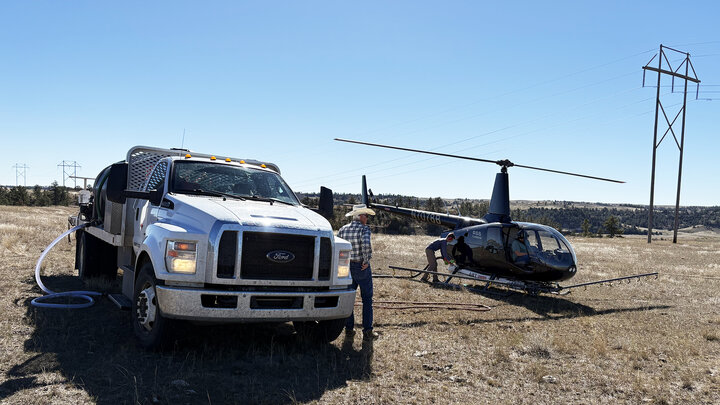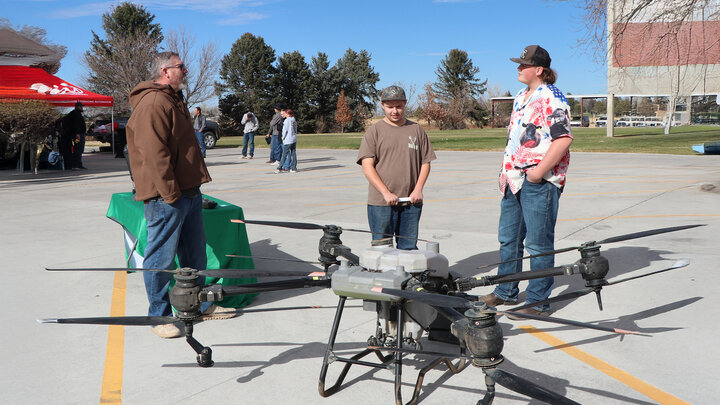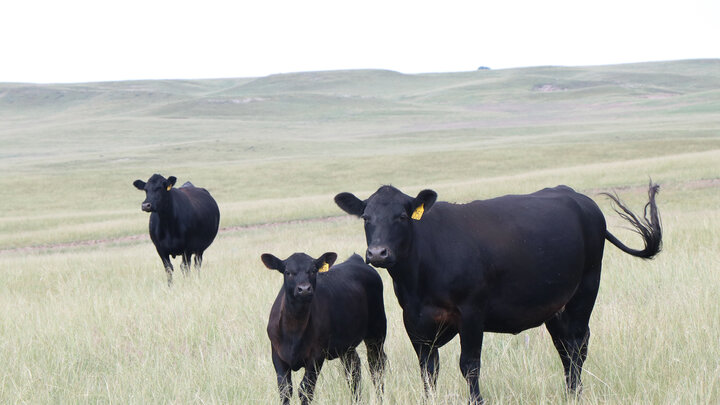The Wildcat Hills have had several wildfires in the past few years, and while dry conditions have contributed to the wildfires. An annual invasive brome grass, commonly known as Cheatgrass (Bromus inermis), has played a significant role. Cheatgrass grows quickly in the spring, competes with native grasses for resources, and affects the native ecosystems on many acres in the Nebraska Panhandle.
Dr. Mitch Stephenson, Nebraska Extension Range Management Specialist, has been working to better understand cheatgrass management on rangelands in the Panhandle since 2015. “Cheatgrass often creates dense patches of highly flammable fine fuels, especially later in the summer,” he said.
Stephenson, in a study with the USDA-Agricultural Research Service, found that targeted cattle grazing in the spring could be used to reduce cheatgrass seed production. In this study, cheatgrass seed biomass was reduced by 30-77 percent, depending on the year and grazing location. Cattle in this study consumed cheatgrass for an average of 38 days in the early spring before plant maturity reduced palatability. While grazing is a viable management practice, the short grazing window, given cheatgrass's rapid growth, poses a challenge for targeted cattle grazing. Additionally, cattle also consumed cool-season and native perennial grasses in springtime grazing.
Through collaboration, Stephenson also began to explore the role of herbicide options for cheatgrass management. One herbicide that showed real promise was Indaziflam (tradename: Rejuvra), a cellulose biosynthesis inhibitor that essentially prevents the root from emerging from the seed. Stephenson worked with local ranchers, such as Gary Darnall, to perform research on their rangelands.
“They (Stephenson’s Lab) did several demonstrations with us. They sprayed it in the fall, and then we ran cattle in the spring on that ground, and as a result, the cattle grazed the sprayed part,” Darnall said. He also noted that the range appeared to have at least twice as much forage, and the cattle ate twice as much as on the non-sprayed range.
Bob Smith, Platte River Basin Environments (PRBE) Manager, also witnessed the test trials on other producers' land and on Platte River Basin properties. “I was astounded, they were just unbelievable. So, we (PRBE) were really impressed and wanted to do some more land.”
This is where they hit a snag: the cost of the herbicide can be prohibitive. Smith said the herbicide is around $70 an acre, and not many producers can afford it. “So we were trying to think of possibilities in grant funding. We had worked with the Nebraska Environmental Trust before on different grants, and after talking with the people at ENVU, the company that produces Rejuvra. We thought it would be a good idea for us to apply for a grant.”
In 2025, Platte River Basin Environments received a 2025 Nebraska Environmental Trust grant to treat 4,000 acres of cheatgrass in the Wildcat Hills area. The grant’s goals included protecting deer, elk, and bighorn habitat by increasing plant diversity and increasing livestock forage. This would be accomplished by treating the project areas with Rejuvra herbicide in the fall to provide long-term control of the cheatgrass seedbank and release the native vegetation and soil function.
“Annual grasses like cheatgrass are very susceptible to this active ingredient at very, very low levels. So essentially, we can go and aerially apply Rejuvra across a pasture. It keeps that cheatgrass seed from germinating for 4 to 5 years. It allows the native vegetation to take advantage of that window of not having any competition and regrow,” said Noe Russo, Envu.
On October 9, 2025, an aerial spraying crew, Hammond Helicopters LLC, from Nephi, Utah, arrived at the Wildcat Hills to spray cheatgrass. Using GPS technology, the helicopter pilot used satellite imagery to spray the mapped out cheatgrass areas. In the Spring of 2026, producers will be able to see how effective the application was when the grasses begin to grow.
Smith said if everything goes well, they would like to apply for another grant in 2026 to cover more acres in the Wildcat region.



